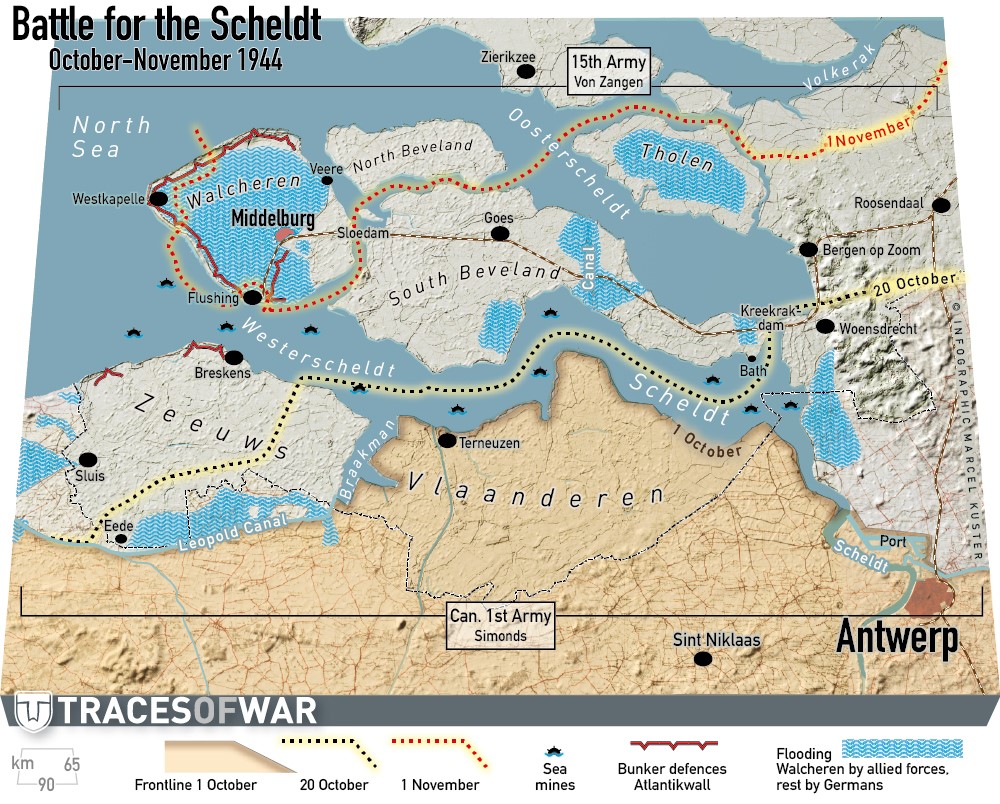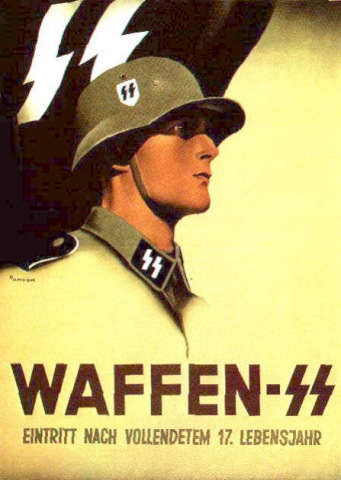Liberation Route Marker 392: The assault on the Walcheren Causeway
The assault on the Walcheren Causeway
In World War II, the Sloedam (then a 1,000-meter-long dike only 45 meters wide) is the only access to Walcheren from South Beveland. Due to the presence of French troops, fighting continues in Zeeland after the Dutch capitulation on May 14, 1940. On May 17, 1940 at 09:20 a.m., the 9. Kompanie/SS-Regiment “Deutschland” of the Verfügungs-Division opens the attack from South Beveland. The French of, among others, the 224éme Régiment d' Infanterie of the 68éme Division d' Infanterie offer fierce resistance and beat off several attacks. At about 5 p.m., the French must nevertheless retreat. That same evening follows the surrender of Walcheren and Zuid-Beveland. The French count nineteen killed, the Germans fifteen.
At the end of the war, the Sloedam is again the scene of fierce fighting. From late October 1944, the Allies had to fight the German occupation of Walcheren. That battle begins with an overland attack through the Sloedam on October 31, 1944, by Canadian troops of the 2nd Canadian Infantry Division. The Black Watch of Canada (RHR), The Calgary Highlanders and Le Régiment de Maisonneuve of the 5th Canadian Infantry Brigade successively carry out four frontal assaults. The first captured bridgehead on Walcheren can only be held for a few hours. One has to retreat again. On November 2, the attack (Operation Magnetise) is taken over by the1stBn The Glasgow Highlanders of the 52nd (Lowland) Infantry Division. In the afternoon of November 3, the Sloedam can be definitively taken. During the battle for the Sloedam, lasting from October 31 to November 5, 1944 , forty-five Canadians and nineteen British were killed.
To support the stalled offensive of the Second Canadian Infantry Division on the Sloedam, they decide to surprise the German units on the Walcheren side by a night attack from the small port of Zuid-Kraaijert, near Nieuwdorp, across the water and mud of the Sloe. During the night of Thursday November 2 to Friday November 3, 1944, Scottish soldiers of the 6th Battalion The Cameronians (SR) crossed the water by boats and then the mud flats of the Sloe; 2 kilometers south of the dam. This secret attack, code-named Operation Mallard, is successful. The Germans do not expect the Allies here and have to retreat. On the Sloedam, the Second Canadian Infantry Division gains ground as a result, and on Nov. 5 the Germans surrender.
The present monuments are a tribute to the brave Allied soldiers who gave their lives for our freedom here on and around the Sloedam and at the battle for the Sloe.
Liberation Route Europe is a certified Cultural Route of the Council of Europe. With hundreds of sites and stories in nine European countries, the route links the main regions along the advance of the Allied Forces in 1943-1945.
The entire route consists of themed routes that can be travelled by by hiking, walking, cycling and car. These routes pass numerous historical and interesting sites and tell stories from a multitude of perspectives that were important in the final phase of World War II.
Many routes feature listening spots, offering the opportunity to listen to a historical story at a location. In addition, many ‘Vectors of Memory’ have been placed, indicating that the passer-by is on one of the Liberation Routes.
The routes can be found on the Liberation Route Europe website or in the app through which many stories can also be listened to.
Do you have more information about this location? Inform us!
Source
- Text: TracesOfWar & Liberation Route Europe
- Photos: Arjan Vrieze
Nearby
Museum
- Museum Wings to Victory - Arnemuiden
- Liberation Museum Zeeland - Nieuwdorp
- Fortress Rammekens - Ritthem
Point of interest
- Coat of Arms Kleverskerke - Kleverskerke
- M4A1(76)W HVSS Sherman Tank Nieuwdorp - Nieuwdorp
- Depot for Mines Veere - Veere
Monument
- Memorials Sloedam 'The Causeway' - Arnemuiden
- Liberation Route Marker 391: Grenades bounce across the Sloedam - Lewedorp
- Memorial Arnemuiden Cemetery - Arnemuiden
Cemetery
- Symbolic Dutch War Grave Lewedorp - Lewedorp
- Grave Civilian Victims Nieuw en St. Joosland - Nieuw en St. Joosland
- Dutch War Grave Nieuwdorp - Nieuwdorp
Remembrance Stone
- Stumbling Stones Kaai 49 - Veere
- Stumbling Stones Kaai 47 - Veere
- Stumbling Stone Rouaansekaai 27 - Middelburg
Fortification
- Bunker in Stützpunkt Scharnhorst Arnemuiden - Arnemuiden
- Stützpunkt Scharnhorst III - bunker 1 - Lewedorp
- Stützpunkt Scharnhorst III - bunker 2 - Lewedorp






